ARTICLES
A collection of our most recent blog posts to help you navigate our portal


The Cora Ball and Beyond: Innovations & Solutions for a Clean Ocean
On the 23rd of February 2023, Innovate Durban hosted a FireSide Chat with our guest speaker Rachael Z. Miller where we discussed innovative solutions to avoid water and ocean pollution. This was a major eye-opener to how humans have impacted our environment on a large scale. Through the wasteful nature of people, the environment has suffered in many ways. This article will focus on the emission of micro-plastics into our oceans.
The Rozalia Project
This project is based in Burlington, Vermont, and the Gulf of Maine where it focuses on the protection and cleaning of the ocean using technology, innovation, solutions-based research, and engaging STEM programmes. Their mission is to clean and protect our oceans. The Rozalia Project has been working on the problem of marine debris since 2010. Their work covers the surface to seafloor, with a focus on urban and coastal waterways, and utilise multiple strategies: prevention through education, remediation (cleanup), innovation, and solutions-based research. The project made the discovery that most of the trash is generated in urban areas, inland, and coastal areas.
What are Microplastics?
These are small pieces of plastic that are a result of the breakdown of larger plastic items, such as water bottles, bags, and packaging materials, which can take centuries to decompose in the environment.
Microplastics are intentionally produced through the manufacturing of ordinary cosmetic products like facial scrubs and toothpaste. These products often contain small plastic beads or microbeads, which are washed down the drain and enter waterways. Once having entered the environment, microplastics can cause harm to marine and wildlife by being ingested or entangling animals. They can also contaminate the food chain as they are consumed by small aquatic organisms, which are then eaten by larger animals.
There are 2 types:
- Primary: These are tiny (5mm) and are found in microbeads, resin pellets, and glitter.
- Secondary: These are larger and break off from fiber and film.
How this affects us
The problem is closer to us than we think. Our household washing machines cause our clothes to break into tiny pieces (microfibers) each time it is washed. This means that there are 700 000 pieces per garment per wash. This contributes to microfiber pollution since this graywater is often disposed of into larger bodies of water. This harms nature in a physical aspect such as abrasions in the throats of sea creatures and starvation in much marine life. The chemical aspect is much more detrimental and results in heavy metals, chlorobenzenes, and many more that run off into our waterways.
The Solution
The co-founder of the Rozalia Project, Rachael Z. Miller introduced us to her brilliant innovation, The Cora Ball.
The Cora Ball was inspired by coral filters in the ocean. This ball is a kind of laundry ball that prevents micro fibers from breaking off our clothing and collects these fibers into a type of fuzz so they can be disposed of in the right manner.
The Cora Ball has been produced through 3D printing and is made from plastic. It has a lifespan of 6 years. It is known to have an efficiency of 31% and can reduce shedding.
Global Innovations & Actions to solving microplastics.
1. Forensics Team
Microfibers have long been a crucial component of forensic research. Conventional procedures are used in forensic investigations to reduce potential contamination and identify fibers that came from the same source. Due to the nature of forensic examinations, their design must prioritise the objectivity and validity of the methodology. Investigations of marine microfibers face many of the same difficulties as forensic investigations, therefore their identification may benefit from the adaptation and application of well-established forensic procedures. Researchers in Australia are using forensic techniques to study the sources and transport of microplastics in the marine environment, including the use of particle tracking technology to follow the movement of plastic particles. The Norwegian Institute of Marine Research is using forensics to identify the sources and distribution of microplastics in Norwegian waters, as well as the potential impacts on marine life.
2. Stop Balloons
Balloons can contribute to microplastics in a few different ways such as when balloons are released into the environment and they eventually break down and release small plastic particles known as microplastics. Balloons can also pose a threat to wildlife. Animals may mistake the balloons for food, and when they ingest the balloons, the balloons can break down into microplastics in their digestive systems. There are some places where balloon releases are already banned, such as in some US states and countries like Australia and Costa Rica. Some cities and towns have also implemented bans on certain types of balloons, such as those made of non-biodegradable materials like Mylar.
3. Marine Debris art in Korea
This art is created using marine debris such as plastic waste and other materials found on beaches and in oceans. In Korea, there are several artists and organisations that are using this form of art to raise awareness about the issue of marine pollution and to promote environmental conservation. The Korea Marine Environment Art Network (KMEAN) is a group of artists and activists who use marine debris as their medium to create art installations and sculptures. Their works are often displayed in public spaces and at events, and are intended to raise awareness about the impact of marine pollution on the environment and marine life. Marine debris art is gaining popularity in Korea as a means of promoting environmental awareness and encouraging people to take action to reduce plastic waste and other forms of marine pollution.
4. Regulations and Policies
There are a number of regulations and policies that have been put in place around the world to address the issue of microplastics. The United States, Canada, the United Kingdom, and France have banned the use of microbeads in personal care products such as facial scrubs and toothpaste. Many countries and cities have implemented bans or fees on single-use plastic bags, which can break down into microplastics over time. For example, in 2021, the European Union implemented a ban on single-use plastic products, including plastic bags. The Netherlands has a programme in place to treat wastewater and capture microplastics. Canada has implemented extended producer responsibility programmes that require companies to take responsibility for the entire lifecycle of their products, including the waste generated by those products. Many countries are also implementing educational campaigns and awareness programmes to educate the public about the issue of microplastics and encourage individuals to take action to reduce plastic waste. These are just a few examples of the regulations and policies in place around the world to address the issue of microplastics. The Save Our Seas Act (SOSA) is a U.S. federal law that was first introduced in 2017 and reauthorized in 2018 and 2020. The act was designed to address the problem of marine debris and ocean pollution, including plastic pollution.
5. Plastic Bank
This is an international organisation that aims to reduce plastic waste and poverty by creating a market for recycled plastic. The organization has set up several “plastic banks” in Haiti to encourage people to collect plastic waste and exchange it for goods or cash. Plastic Bank has provided a source of income for thousands of Haitians while also reducing the amount of plastic waste that ends up in the environment. In addition to its work in Haiti, Plastic Bank has set up similar programmes in several other countries, including Indonesia, the Philippines, and Brazil. Through these initiatives, the organisation is working to create a more sustainable future by reducing plastic waste and promoting social and economic development.
6. Bubble Barrier
A bubble barrier is a system that uses air bubbles to trap plastic waste and other debris in waterways, preventing it from flowing downstream. The system works by creating a wall of bubbles across a river or canal, which creates a barrier that traps floating debris and directs it to a collection point. The Netherlands is one of several countries that has implemented bubble barrier systems to address the problem of plastic waste in its waterways. The Bubble Barrier in Amsterdam consists of a tube that is placed on the bottom of the canal, which releases a stream of bubbles that rises to the surface. The bubbles create a barrier that pushes plastic waste and other debris to the sides of the canal, where it can be collected and removed.
These are just a few of the innovative ways in which countries have tried to solve the microplastic pollution problem.
I will end this piece with a wise quote: “The oceans are the planet’s last great living wilderness, man’s only remaining frontier on Earth, and perhaps his last chance to prove himself a rational species.” – John L. Culleny. As humans, we need to do better at conserving our planet.
For more information on this topic follow http://instagram.com/rozaliaproject and https://www.instagram.com/innovatedurban/ .
By: Tamisha Gengayah

ChatGPT: Revolutionizing Innovation and Workflows
By Andre Pillay
In today’s rapidly changing world, innovation is key to progress and success, but with numerous challenges facing economies, cultivating a culture of innovation is more important than ever. That’s where ChatGPT comes in. Developed by OpenAI, ChatGPT is an advanced artificial intelligence-powered language model that can inspire, teach, and cultivate innovation.
ChatGPT’s ability to understand and generate human-like responses to a wide range of questions and commands makes it a valuable tool for inspiring innovation. Individuals can explore new concepts and learn from the perspectives of others by engaging in conversations with ChatGPT. This can help generate new and innovative ideas and provide inspiration for thinking outside the box and approaching challenges in new ways.
Furthermore, ChatGPT can also be used to teach innovation by providing information and resources on entrepreneurship. It can help people develop the skills and knowledge they need to bring their ideas to life, including how to turn an idea into a business plan, find funding, and network and collaborate with like-minded individuals.
Cultivating a culture of innovation is also critical to progress and growth. ChatGPT can play a role in this by fostering conversations and providing information on innovation. By spreading awareness about the importance of innovation, ChatGPT can encourage people to embrace new ideas and technologies, creating an environment where innovation is valued and supported.
In addition to its potential impact on innovation, ChatGPT can also revolutionize the workplace. It has numerous applications that can enhance work processes and efficiency.
For example, ChatGPT can improve customer service by automating repetitive tasks such as answering frequently asked questions and directing customers to relevant resources. This can free up time for human customer service representatives to focus on more complex and challenging customer inquiries, leading to higher customer satisfaction and loyalty.
ChatGPT can also automate routine and time-consuming tasks in the workplace, such as data entry, scheduling appointments, and generating reports. This can free up employees to focus on more important and value-adding activities, enhancing productivity.
Furthermore, ChatGPT can improve collaboration and communication within the workplace. Providing quick and accurate answers to questions can save time and minimize misunderstandings, resulting in more productive and efficient teams. It can also be integrated into team chat apps to assist employees in real-time,but that’s not all.
ChatGPT can also be a valuable tool for innovators in the innovation ecosystem. Its ability to generate ideas, facilitate learning and collaboration, and support decision-making can contribute to the growth and success of innovation projects and initiatives.
Like anything, there will always be bad with the good so here are some possible cons of using ChatGPT:
Job Loss: AI has the potential to replace jobs currently done by humans, leading to a loss of jobs in industries that rely on human labor. While some new jobs may be created, thenet effect could be negative.
Dependence: People may become too reliant on AI for decision-making, which could lead to a decrease in critical thinking and problem-solving skills and a lack of diversity in opinions and perspectives.
Privacy: AI systems rely on large amounts of data, which can raise concerns about privacy and security. Companies must ensure that they are collecting and using data ethically and transparently, which can be a challenge in an age where data breaches are becoming more common.
Bias: AI systems can be biased due to the data used to train them or the algorithms themselves. This can lead to discriminatory outcomes in hiring or lending decisions.
Cost: Implementing AI can be expensive, especially for smaller companies. The cost of developing and maintaining AI systems may be prohibitive for some businesses, leading to further consolidation in industries dominated by larger companies.
It’s clear that this technology has both positive and negative implications for society. While AI has the potential to revolutionize industries and improve the quality of life for individuals, it also poses several concerns that must be addressed.
However, it’s important to note that the success of AI implementation depends largely on how it’s utilized. Companies and individuals must take steps to ensure that AI is being used ethically and transparently, and that potential negative consequences are being mitigated. By taking a responsible approach to AI, it’s possible to harness its benefits while minimizing its drawbacks.
Therefore, it’s crucial for businesses and individuals to be mindful of the potential risks associated with AI, and to use it in a responsible and ethical manner. Ultimately, the success of AI implementation will depend on the choices we make about how we use it. With careful consideration and responsible action, we can ensure that AI is a positive force for change in society.
References:
Dickson, B. 2022. What to (not) expect from OpenAI’s ChatGPT. TechTalks. Available: https://bdtechtalks.com/2022/12/05/openai-chatgpt/.
Zinkula, J. Mok, A. 2023. 7 Ways to Use ChatGPT at Work to Boost Your Productivity, Make Your Job Easier, and Save a Ton of Time. Entrepreneur. Available: https://www.entrepreneur.com/business-news/how-to-use-chatgpt-to-save-time-and-make-work-easier/444622.

the ethics of big data and privacy
By: Tamisha Gengayah
The increasing digitalisation of society has led to various aspects of everyday life relying heavily on the digital sphere. This has resulted in the generation of vast amounts of data, known as big data, through the digital traces and footprints left behind by individuals. With the aid of advanced analytic tools like AI, valuable information can be extracted from this massive pool of data, enabling significant advancements in various fields.
The term ‘big data’ refers to large, complicated data that are challenging to manage using conventional data processing methods. Big data is described using the “3 Vs”—volume (big amount of data), velocity (rapid rate of data in and out), and variety (wide range of data types and sources). Big data analysis can spot trends, patterns, and insights that traditional approaches can overlook. This ability to collect and analyse vast amounts of data is a key component of the Fourth Industrial Revolution (4IR).
Big data has made significant advancements in many areas, including healthcare, reducing crime by analysing patterns and trends, protecting the environment by tracking, and analysing environmental changes, disaster relief, and many more areas. Here lies the problem. Some would argue that there must be a drawback to big data if it can collect enormous volumes of data and handle it without error. Big data’s ethics and privacy policies have frequently come under scrutiny.
Privacy Concerns
Many people have questioned who is responsible for ensuring that big data is collected, stored, and used ethically, and who is accountable for any harm that results from its misuse. Some people question the ownership of the data that is collected and how is it being used and shared.
There are many laws and policies in place to protect sensitive information, however, these laws are sometimes overlooked by large corporations. The most recent case involving Microsoft’s illegal collection and retention of children’s data for its Xbox video game console raised significant concerns about big data and privacy issues. Microsoft had collected data from children without parental consent and retained it unlawfully, clearly violating the Children’s Online Privacy Protection Act (COPPA). This incident highlighted the need for stricter regulations and safeguards to protect the personal information of users, especially children.
This situation raised public awareness of the potential dangers of big data in the context of children’s privacy. With the mass creation of digital technologies, including gaming consoles, social media platforms, and online services, vast amounts of data are being generated, collected, and analyses daily. Companies like Microsoft have access to extensive personal information and even sensitive details like health and behavioral patterns. In cases where children are involved, it is crucial to protect their privacy since they may not fully understand the implications of sharing their personal information, making it essential for parents/guardians to be involved in consent processes.
This case is a reminder that big data concerns extend beyond individual privacy. They raise broad questions regarding the responsible handling and disposal of data. It emphasises the need for effective data protection regulations, strict enforcement, and corporate accountability to ensure the safeguarding of personal information in the digital age.
A Solution to the problem
To solve this and put people at ease, it is important to ensure transparency in the collection, storage, and use of big data so that individuals are aware of how their information is being used and can make informed decisions about it. People should also be granted access to and control over their data, including the right to know what data is being collected and how it is used. Since companies and originations that are collecting big data often collect sensitive information about individuals, such as their financial history, health records, and personal preferences.
Here are a few steps users can take to protect themselves from big data concerns:
Be mindful of what information you share online. Only share personal information on trusted websites. Caution is advised when sharing sensitive information such as your social security number/ID number, bank account details, and date of birth.
It is advisable to create strong passwords and enable two-factor authentication.
Read privacy policies carefully. Before using a website or app, read its privacy policy carefully to understand how your data will be used, stored, and shared.
Protect your Web browsing by making use of a virtual private network (VPN) which can encrypt your internet connection and protect your online activities from prying eyes.
Use your privacy settings to limit the amount of data you share with websites and social media platforms.
Be wary of phishing scams that are designed to trick you into revealing your personal information.
Be cautious when clicking on links in emails or text messages and never provide personal information to unknown sources.
Install an antivirus software but ensure that it is a legit product. Installing software from sketchy sites can cause more harm.
By taking these steps, you can protect yourself from big data concerns and safeguard your personal information online.
Advantages of Big Data
Despite the privacy and ethical concerns regarding big data, there are many advantages of big data. Big Data has the potential to significantly revolutionise everyday life through improved decision-making since big data enables organisations to analyse vast amounts of information, leading to more informed and accurate decisions.
Big data has the potential to increase efficiency by allowing organisations to identify inefficiencies and optimise processes, leading to increased productivity and cost savings.
Another underrated benefit of big data is Innovation. The development of new products and services is all possible through analysing trends in large amounts of data. Big data can provide companies with new insights and opportunities for innovation, leading to the development of new products and services.
In conclusion, the emergence of big data in our increasingly digital society has brought both opportunities and challenges. While big data analysis has shown great potential for advancements in various fields, it has also raised significant ethical concerns regarding privacy.
Instances like the Microsoft case have highlighted the need for stricter regulations and safeguards to protect personal information. It is essential to ensure transparency in the collection, storage, and use of big data, granting individuals access and control over their data. Strengthening data protection regulations and corporate accountability are vital steps in safeguarding personal information in the digital age. Individuals can also take measures to protect themselves from big data concerns, such as being cautious when sharing information online, using strong passwords and utilising privacy settings to limit data sharing.
Despite the challenges, big data analysis offers significant advantages, including improved decision-making, increased efficiency, and opportunities for innovation. By addressing ethical considerations, we can harness its potential while ensuring the protection of privacy.
References:
Big Data Analytics – Ethical And Privacy Issues. n.d. Eaton Business School. Available: https://ebsedu.org/blog/data-analytics-ethical-privacy-issues/.
Duggal, N. 2023. Top 7 Benefits of Big Data and Analytics and Reasons to Consider It. Available: https://www.simplilearn.com/benefits-of-big-data-and-analytics-article.
Klosowski, T. n.d. How to Protect Your Digital Privacy. The New York Times. Available: https://www.nytimes.com/guides/privacy-project/how-to-protect-your-digital-privacy.
The Big Data Debate: Big Risks vs Big Opportunities. n.d. Cicero. Available: https://cicerogroup.com/blog/2019/07/17/the-big-data-debate-big-risks-vs-big-opportunities/.
The Washington Post. 2023. Microsoft will pay $20M to settle U.S. charges of illegally collecting children’s data. Available: https://www.washingtonpost.com/business/2023/06/05/microsoft-xbox-childrens-data-ftc-fine/54419e80-040c-11ee-b74a-5bdd335d4fa2_story.html#.
Weinhardt, M. 2021. Big Data: Some Ethical Concerns for the Social Sciences. Social Sciences 10: 36.
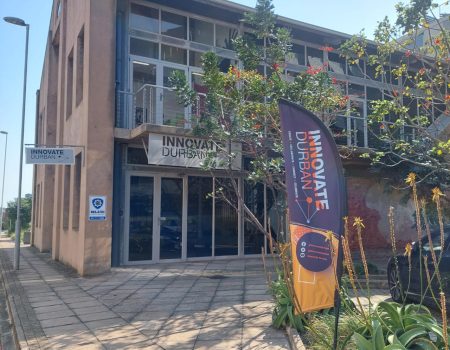
By: Mark Mongali
Innovation and the Path to a Better Future: Unleashing the Potential of Innovate Durban
In today’s fast-changing world, various places serve as hotspots for innovative ideas and progress because of their high concentration of people, resources, and activities. These centres become fertile grounds for innovation and progress as they provide the necessary resources and capital for people to harness and nurture innovative ideas. As a result, innovation thrives in these diverse locations, driving advancements and positive change across different communities and industries.
Within this landscape, Innovate Durban emerges as a progressive innovation organization, and redefines the boundaries of possibility in various areas because of its proactive approach to supporting and connecting innovators, uplifting people, providing mentorship, and providing them with essential innovation-related skills. By fostering collaboration and nurturing talent in different fields, Innovate Durban creates an environment where diverse ideas flourish, propelling progress and paving the way for transformative advancements in multiple domains.
This article explores how Innovate Durban has emerged at the forefront of innovation in KZN.
Innovate Durban, set up in 2016 and operationalised in 2017, is a registered non-profit organization (NPO) with a mission to encourage and support innovation and innovators in the Durban, KwaZulu-Natal region and even beyond. It all started when the eThekwini Municipality’s Economic Development Unit produced a plan to promote innovation in the municipal area, with a focus on marginalised communities. This plan became Innovate Durban. This was all made possible through the help of the Innovation Stakeholder Forum, a group that meets every three months to talk about innovation and how to support and nurture it in Durban, KZN.
The organization has a primary goal of cultivating a thriving culture of innovation and entrepreneurship within the region. With a focus on supporting start-ups, fostering collaboration, and promoting innovative thinking across diverse sectors, Innovate Durban has contributed to job creation and economic development in the region.
However, the journey to achieving these objectives was not without its challenges. Like many initiatives, Innovate Durban encountered various barriers, including financial constraints and technical hurdles. To overcome these obstacles, the organization actively sought partnerships with public and private entities, academia, and non-profit organizations, creating a collaborative ecosystem that harnessed collective resources and expertise. By leveraging these partnerships, Innovate Durban was able to secure additional funding, access advanced technical support, and provide more extensive opportunities and resources for its innovators and communities. This collaborative approach has strengthened the innovation ecosystem in the region, allowing for greater support to budding entrepreneurs and enabling sustainable growth in the region’s start-up landscape.
The Innovation Co-Lab embodies Innovate Durban’s core vision which is showing the organization’s commitment to fostering innovative progress. The Co-Lab is situated in Cato Manor and offers a space for collaboration and nurturing ideas. Entrepreneurs, researchers, and innovators gather here to utilize advanced technologies and comprehensive services, including 3D printing, laser cutting and working space for collaboration.
Additionally, Innovate Durban has extended its impact to other regions. The Indaleni Innovation Hub in Richmond and an upcoming Innovation Co-Lab in Kokstad further highlight the organization’s dedication to empowering marginalized communities. These hubs provide mentorship, training, funding, and investment opportunities through empowering visionary individuals with the potential to revolutionize different industries and transform various areas.
Progressive Projects and Initiatives: Beyond the Durban Innovation Co-Lab, Innovate Durban’s expansive portfolio encompasses a multitude of transformative projects and initiatives:
Youth Innovation Challenge (YIC) is the Flagship Programme of Innovate Durban. It seeks to take a group of around 60-80 youth (ages 18 – 35) through the innovation pipeline with the intention of finding innovative solutions for challenges faced by residents and businesses. Implementation includes upskilling workshops, coding training, pitching sessions, and group solution demonstration events.
Start-Up Support Programme (SUSP) is an accelerated mentorship programme taking innovators from conceptualisation to a market-ready phase. The 12-month programme includes providing business and technical skills to innovators, facilitating prototype funding for participants, and linking innovators with angel investors.
Innovator Support Fund (ISF): Beyond the Start-Up Support Programme Innovate Durban also offers support on an ongoing basis through the ISF. This programme provides funding for innovators who have a prototype or market viable product. In 2023, 10 innovators have each been sponsored R20000, with Innovate Durban touching base with the supported individuals on a 6- and 12-month basis.
Pitching Den is an initiative aimed at allowing innovators to pitch their business concepts to a panel of judges. Before the final pitching, innovators attend pitch training sessions run by Innovate Durban to develop capacity. The Pitching Den aims to highlight innovators and innovative start-ups and opportunities, create a platform and network opportunities for innovators to pitch their businesses, and link innovators/start-ups with Venture Capital and Angel Investors. Prizes are awarded as part of the initiative, and innovators are also given networking and investor meet-up opportunities through the programmes.
Innovate Durban looks ahead to a promising future, working on exciting projects and expanding its influence in the region. With a growing network of partners and supporters, Innovate Durban takes the lead in driving innovation. By embracing teamwork, collaboration, and data-driven strategies, Innovate Durban strives to make the region more sustainable, resilient, and fair for everyone.
Innovate Durban stands as an innovation organization, reshaping the lives of innovators, communities, and inspiring global change. As Durban evolves and surges ahead, Innovate Durban remains at the forefront, challenging norms and promoting change.
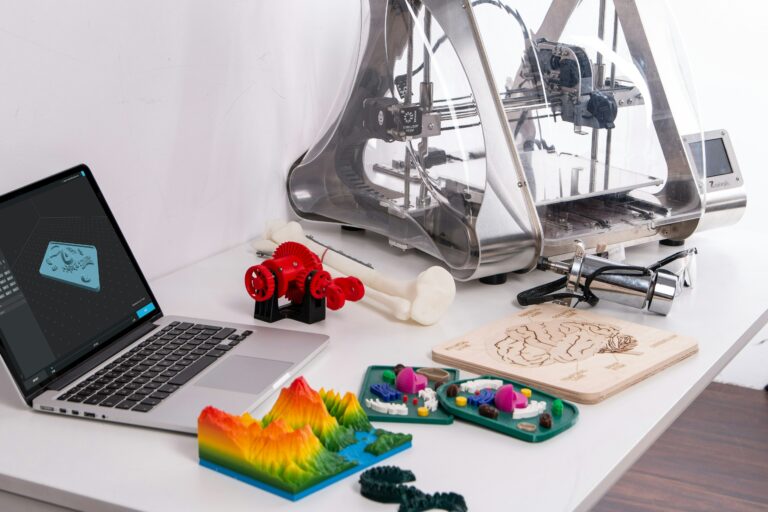
By: Jason Strauss
Tips for 3D Design: Working collaboratively with your Client
In the dynamic realm of design, we navigate a competitive journey filled with both triumphs and tribulations, where each moment is an opportunity for continuous growth. As 3D designers, our passion fuels our drive to create exceptional work, but the burning question often remains: How can we ensure that our creative endeavours not only resonate with our own aspirations but also align seamlessly with the expectations of our valued clients and customers?
In this article, we’ll delve into the best practices for managing the high expectations of our clients, which is a critical aspect of our craft. We’ll explore the transformative power of collaborative work, unlocking its potential to elevate the value 3D designers can bring to our client’s projects. Moreover, we’ll address the enduring concern surrounding artificial intelligence’s (AI) role in design, dispelling common worries and highlighting its potential to revolutionise our creative processes. So, let’s embark on this journey together, embracing the challenges and opportunities that lie ahead in the ever-evolving world of design.
Navigating Client Expectations: The Role of a 3D Designer
Clients are a strange kind of people; they know exactly what they want, but they don’t know how to make it possible. We see this when we start a new project with a client, and 3D designers always begin with the initial conversation:
- How tall is it?
- What colour is it?
- How many moving parts?
As a 3D designer, our role is to transform their vision into reality. After all, if clients could have done it themselves, they would have. Designers have developed an intuition about these sorts of things, which we have earned over time through experience. You will frequently be reminded that your clients often do not have this intuition or a clear understanding of what’s possible. This often materialises as the inevitable frustration that clients often dream big and dream expensive! That’s not their fault, and they don’t know what the parameters of possibility are. It is then on you, the 3D designer, to take a moment right at the beginning to explain what would be possible or not; clients need to clearly understand what it costs and how long it will take.
And no, they won’t run away.
The biggest fear that comes from saying, “I’m sorry, but I can’t do that,” is that we might lose our client. If we can’t do it the way they want or for the price they need, then it is better to part ways with that client. Our intentions are not to be big and scary, but to mould their idea into a possible space that you can work within.
A trick is to suggest alternatives and have a conversation about new creative ideas; it is a creative process after all.
Instead of:
“I can’t do that.”
“That will be R40 000.00”
“That won’t work.”
Rather use:
“How do you feel if we make it shorter?”
“I could do it in pieces but that would take longer.”
“If we just did this for now, it could fit into your budget.”
As a 3D designer, you can prune this creative tree, but if you prune it with a chainsaw, you will kill it, so prune honestly and delicately.
Get clients involved
The design industry is great, and your customers know that. Clients proudly showcase their furniture, product, painting, or part that you designed, remembering not only what it is to them now but also what it took to get there. More often than not, a client who is onboard and involved with the design and development journey will keep the nostalgia of the process at heart as they proudly showcase the product that you designed, as they are equally, if not more, invested than you in their design coming to life. This iterative process is very important for clients. Designers need to remember that clients are there for this collaborative journey.
As an experienced 3D designer, I’ve found that my clients are happiest when they feel like they have contributed to the design process. Most of the time, the client takes as much ownership as you can give them when it comes to their participation in the design. I haven’t figured out how to get them to do all the work yet, but research continues!
I have moved my design workflows onto platforms that allow for the seamless sharing of content and tools that allow me to instantly share a 3D file that can be explored on a web app without any sign-ups or special programmes. Platforms like Fusion 360 or Onshape allow for this kind of seamless sharing that grants your clients the ability to watch design happen live with the ability to comment on parts, features, and materials on the go. Overall, this streamlines the design process as designers receive assistance and feedback from customers. You will find a more satisfied client at the end of the design journey if they were included along the way.
Artificial intelligence
Yes, you knew this was going to come up.
It won’t steal your job, just like pliers won’t take away work from a mechanic and bricks won’t take away work from an architect. AI does this scary thing where it can make amazing work using the classic vague requests that customers provide; furthermore, the work is done in seconds compared to weeks, but it still doesn’t replace the designer.
As mentioned before, our role is to transform the client’s ideas into reality, and what we have now are tools to make that easier. Your client may now clearly provide an on-the-shelf concept art of the product idea that they need, but you are still critically needed to reach that final dream, and there is now less communication needed.
Some of us in the design space believe that models like DALL-E have replaced us, but the nature of our modern AI tools lacks the nuances that are developed from your experience and skill. We can consider AI art as a Version 1 or a starting point if we want to achieve better human-centred design. AI has the potential to improve the efficiency of the design process, as designers may not be required for low-quality, less arduous work – but can rather focus on other tasks. Some examples of DALL-E prompts that I am glad not to have dealt with are:
- “Duolingo trail cam”
- “A bottle of ranch testifying in court”
- “Walter White in Animal Crossing”
- “Thanos looking for his mom in a Wal-Mart.”
The advice when it comes to trained models and AI tools is to embrace them, know their shortcomings, such as their inability to consider the end application of the design which often results in designs that exceed manufacturing limits and tolerances, and consider them a platform that you can work from instead of a tool to be wary of and shy away from. I have limited drawing abilities, and sometimes struggle to understand the visual ideas my clients have, so I often resort to using AI tools to help the customer explain to me what they envision. This helps tremendously and normally saves me time by avoiding 2 or 3 product refinement meetings that can occur when there isn’t a clear agreed-upon direction.
In the realm of 3D design, the synergy between designer and client is a dynamic journey of collaboration and creativity. Clients, though filled with vision, often need guidance to translate their ideas into reality. Instead of dismissing their desires, we should delicately prune and suggest alternatives, nurturing a shared creative process. Engaging clients in the design journey fosters satisfaction and connection, while the rise of AI tools should be seen as a complement rather than a threat, enhancing our capabilities. As we adapt and innovate, designers bridge the gap between creativity and client expectations, forging a future where possibilities are boundless and design is a harmonious partnership.

By: Tamisha Gengayah
Exploring some of the challenges facing female entrepreneurs
Female entrepreneurship is often under-researched, particularly in the African context. Most of the available literature is written by non-Africans in the context of the developed world. Despite the paucity of literature, female entrepreneurship is a critical element shaping a region’s socio-economic development. Often, women have been excluded from meaningfully participating in the economy because of traditions, religious beliefs, and cultural practices (Boateng, 2017). This article reflects on an interesting discussion that I had with female entrepreneurs at Innovate Durban’s American Corner, and a subsequent review of related literature. This discussion brought to light the universality of experiences, despite the diversity of backgrounds. This article highlights some of the key themes that emerged during this discussion, with the hope that readers may find resonance and insights to navigate their own challenges.
What initiated the discussion?
On the 4th of December 2023, Innovate Durban’s recently established American Corner hosted a film screening of She Did That, showcasing the inspirational work of the talented Renae L. Bluitt. Renae is a New York-based filmmaker who has brought to life the stories and struggles of Black women entrepreneurs by addressing pressing issues such as the funding gap for women of colour, and their trials and wins as they attempt to break the barriers that confine them. The documentary focuses on the story of four remarkable black female entrepreneurs: Luvvie Ajayi, an author, speaker, and digital strategist; Lisa Price, the founder of Carol’s Daughter, a hair care brand; Melissa Butler, the creator of beauty brand The Lip Bar; and Tonya Rapley, a financial expert from My Fab Finance. This film was created to shed light on the authentic challenges and experiences faced by Black women entrepreneurs, going beyond their appearances on social media. The film draws back the curtain, providing insight into the how and why of their journeys. This film opened my mind to the plight of women, more specifically women of colour, in their entrepreneurial journeys.
Following the screening, I facilitated a discussion with 10 young and hard-working women who, despite their circumstances, are nothing short of inspirational. These ladies come from different walks of life and have overcome many obstacles in their educational, entrepreneurial and self-growth journeys. Collectively, the group reflected on the film screening and their diverse experiences as female entrepreneurs. Organically, the discussion with the attendees focused on the real-life challenges female entrepreneurs face, and several themes related to entrepreneurship and female entrepreneurship emerged.
Acknowledging mental health challenges
A major theme that emerged from the discussion was centred on mental health concerns, in particular, the depression and loneliness that come with not having a good support system and people that you can fall back on. Often, the group of female entrepreneurs felt that it was taboo to vent to a parent because certain ethnicities might view this as disrespectful because of the way they were raised or even ignorance towards mental health. Without a solid support structure to fall back on, they can often feel isolated and burnt out, which is very taxing on an individual. Some of the attendees noted that they would seek therapy as a means of dealing with their depression, too often uncovering childhood wounds. While therapy may seem like the ideal solution to some, the discussion highlighted the stigma associated with therapy or people not being fortunate enough to access these types of resources. In these cases, some attendees reflected that they would take a few days to wind down and relax in solitude, where they could gather their thoughts and anticipate their next moves. Others enjoyed listening to podcasts to distract themselves: a suggested podcast is Wisdom & Wellness with Mpoomy Ledwaba. Some, who were fortunate enough, could rely on their parents, friends and partners to support them when they could not give 100% to different aspects of their lives.
In the weeks after the discussion, I explored literature related to entrepreneurship and mental health challenges. Blum and Miller (2021) suggested a few ways to improve mental health. One of the most important aspects is giving your feelings a name. Often, we struggle to articulate what we are actually feeling; we aren’t burnt out or depressed, but something in between or not quite to this magnitude. This feeling is called languishing and is often called the neglected middle child (Blum and Miller, 2021). Another way to manage your mental health is to find meaning in your everyday activities. This can be done by completing your activities, even things you dread, with more purpose and tenacity. Remember that if you don’t prioritise your mental health, you will be pouring from an empty cup.
Identifying your support system
The second theme that emerged from the discussion was the importance of identifying your support system. Now, you might think that it is a given that you would receive emotional support from those closest to you, but often, this is not the case. Most of the discussants had experiences where their friends were not fully in their corner, where multiple participants held the perception that their friends were not supporting their businesses and entrepreneurial endeavours. However, several women noted that some of their greatest supporters were strangers or people they were not close to. This takes me back to an old quote by Heath Ledger: “Your BIGGEST supporter is a stranger, and your BIGGEST hater is someone you know well”.
This perception held by the attendees is somewhat perplexing, but there are many reasons why they feel the way they do. An article by Whitney (2017), a mindset coach and business strategist, highlighted that as an entrepreneur, you take risks and step into your individual power. For some, other people gaining power relative to themselves is intimidating. People may become accustomed to a version of you that was not confident or bold enough to take this step, so they do not know how to react to this new powerful and confident version of you. A possible underlying reason for this is that they might feel that on your journey to entrepreneurial success, you might change and view them differently (Whitney, 2017). Most people are comfortable doing what they know and sticking to their routine because it gives them a sense of safety, comfort and security, so it is somewhat perplexing to them when someone is willing to take risks and step out of these norms that they are accustomed to. In contrast, strangers who become acquaintances and transition into friends along the entrepreneurial journey often have less bias towards you since they only know this ‘new’ version of you and can also relate to your challenges. It is helpful to remind yourself that you are not responsible for, nor can you control, the way that friends and family act towards you. However, you are responsible for how you choose to react to this.
Imposter syndrome
Aligned with the theme of mental health, many of the ladies brought up the feeling of imposter syndrome – the third theme. A captivating article by Martins (2023) describes imposter syndrome as a feeling of self-doubt when it comes to your accomplishments. With this syndrome, people feel like they do not deserve certain things or opportunities because they do not feel good enough or that they have tricked people into thinking that they are good at something. Imposter syndrome is very prevalent in the workplace. It can often manifest as a lack of confidence in your work, getting upset over minor mistakes, burnout and even a fear of disappointing your team.
Silva (2020) highlighted that as an entrepreneur, you are constantly pushing yourself and getting your foot into doors you have never been in before; this will often result in imposter syndrome. How do you know once you have succeeded or reached ‘expert’ status? Is there even such a thing as ‘expert’ status? This is more of something that comes with time, experience and knowledge. It is good to remind yourself that you do not know everything. However, this should not stop you from sharing the knowledge that you possess or building a business around this knowledge.
There are several ways to overcome imposter syndrome, and change your perceptions of yourself:
- You must accept that this is a natural feeling that comes with growth and stepping out of your comfort zone. Once you have embraced and acknowledged these feelings, you will be able to reach new heights (Silva, 2020).
- Don’t get discouraged by the things that you do not know yet. As you gain more knowledge and experience, you will be able to support your perceived credibility. In the meantime, use your existing knowledge base and life experiences, and draw on the opinions of others that you have interacted with along the way (Silva, 2020).
- Martins (2023) suggested that a good way to combat imposter syndrome is to express your feelings. Instead of internalising these feelings, you can recognise them for what they are and move on from them.
- Instead of comparing yourself to a more senior team member, ask yourself what you can learn from them. Certain people have strengths in different areas you can benefit from (Martins, 2023).
Queen Bee Syndrome
Queen Bee Syndrome was the fourth theme that emerged from our discussions. Personally, I was surprised that this challenge emerged and how it affects women in professional settings. Queen Bee Syndrome can be summed up as when a woman in a position of power and authority becomes critical and judgmental toward her female colleagues, while also showing special treatment to men, especially in matters like promotions. In contrast to an actual queen bee in her colony, a human queen bee exhibits condescending and hostile behaviour toward other females in a plea to get ahead. Despite the current movement around feminist ideals and the rise of women in leadership roles within traditionally male-dominated fields, this behaviour persists. Surprisingly, some women adopt this behaviour to adapt to male-dominated work cultures, disregarding their female counterparts to climb the corporate ladder (Ramnund-Mansingh, 2020). I recently read an article by Saddleton (2019) which shed light on the magnitude of this behaviour and how deep it runs in professional settings. Queen Bee Syndrome can leave victims devastated, which often leads to reduced productivity in the workplace and on a personal level, as well as limited career advancement.
Here are some suggested ways to avoid the sting of the Queen Bee (Balodi 2013):
- Developing your skillset will assist you in expanding your knowledge and gaining more confidence.
- Expand your network through joining professional networks at your company and within your industry.
- Lastly, and most importantly, do not react when provoked. These people love to get under your skin. Remain level-headed, and don’t fall victim to their tactics.
Celebrating successes and empowering one another is important
Despite the challenges faced by female entrepreneurs, we need to celebrate successes and empower one another. The discussion revealed that this group of women had fought tooth and nail to achieve their current status. Some entrepreneurs needed two jobs to support their businesses and families, and some were the first in their families to get into a university. These are often conversations we will never hear because of the resilience and tough skin you have to form as a woman, yet alone a female entrepreneur. Women can do great things when they have been included in spaces that previously excluded them, and only by listening to their struggles and accomplishments can we create a more inclusive world for them and future generations.
In an era where a beautiful movement has been deemed as ‘toxic feminism”, we must remember the true essence of feminism and why it was brought about. It is apt to conclude this article with a powerful quote from the youngest female Nobel Prize laureate in history, Malala Yousafzai, “I raise up my voice — not so that I can shout, but so that those without a voice can be heard … we cannot all succeed when half of us are held back.”
References
Balodi, J. (2013). Taking the Sting out of ‘Queen Bees’ Who May Be Out to Get You. Forbes. Available: https://www.forbes.com/sites/johnbaldoni/2013/03/04/taking-the-sting-out-of-queen-bees-who-may-be-out-to-get-you/
Blum, D. and Miller, F. (2021). How to Improve Your Mental Health in 2022: Well’s most popular stories of the year offered tools to stay happy and healthy. The New York Times. Available: https://www.nytimes.com/2021/12/30/well/mind/mental-health-advice-2022.html
Boateng, A. (2017). African Female Entrepreneurship: Merging Profit and Social Motives for the Greater Good. Springer. Available: http://ndl.ethernet.edu.et/bitstream/123456789/38033/1/25.pdf.
Martins, J. (2023). Unmasking imposter syndrome: 15 ways to overcome it at work. Available: https://asana.com/resources/impostor-syndrome.
Ramnund-Mansingh, A. (2020). Queen bees muscle out other women in the workplace. Available: https://www.mancosa.co.za/blog/queen-bees-muscle-out-other-women-in-the-workplace/.
Saddleton, L. (2019). Avoiding the sting of the office “queen bee”. Insurance business. Available: https://www.insurancebusinessmag.com/us/news/diversity-inclusion/avoiding-the-sting-of-the-office-queen-bee-167767.aspx.
Silva, P. (2020). Imposter Syndrome In Your Business And How To Overcome It. Available: https://www.forbes.com/sites/piasilva/2020/05/15/imposter-syndrome-in-your-business-and-how-to-overcome-it/?sh=753375d13048.
Whitney, G. (2017). Top 3 Reasons Why Your Biggest Supporters Will Be Strangers & Not Your Family/Friends. Available: https://www.huffpost.com/entry/top-3-reasons-why-your-biggest-supporters-will-be-strangers_b_57b39619e4b014a587fbb41e.
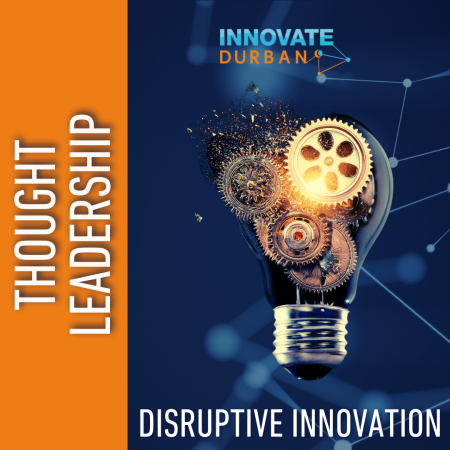
By: Patrick Martel and Tamisha Gengayah
Disrupting the Status Quo: The Art of Disruptive Innovation?
Academics and practitioners are increasingly focusing on disruptive innovation, which is considered a critical driver behind several successful companies and industries that have changed entire markets. At Innovate Durban, promoting and supporting disruptive innovation is even an organisational priority. But what is disruptive innovation? The following is the first of two articles that explore this concept.
Disruptive innovation, a true game-changer, challenges the status quo and business as usual. It’s when a new product, service, or business model completely transforms an existing market or creates a brand-new one (Christensen, 1997). Initially, a new approach promoted by disruptors may seem somewhat inferior, unconventional or unattractive to mainstream customers (Christensen, 1997). However, with the passing of time, the market becomes redefined, and the leading incumbent players become displaced, showing the power of disruptive innovation to challenge and reshape the business landscape, and promote economic growth. Disruptive innovation may also result in a shift in consumption behaviour.
Professor Clayton Christensen from Harvard Business School coined the term ‘disruptive innovation’ in his 1997 book, The Innovator’s Dilemma. Adopting a longitudinal outlook, Christiansen observed that well-established businesses regularly struggled to adapt to disruptive innovations, as they were too focused on sustaining innovations that cater to their existing customer base and current business models. Christensen (1997) noted that despite many incumbents in the market being well-managed, they overlooked important aspects that triggered their decline. After an in-depth study, Christensen (1997) used a technology-change framework to develop his theory of disruptive innovation.
Christensen’s (1997) seminal work on disruptive innovation examined the disk drive industry, the retail sector and the steel industry. His study revealed that when an innovation emerged that enhanced performance on aspects that mainstream customers typically value, well-established firms tended to lead commercialisation and retained their strong market position (Christensen, 1997; Christensen et al., 2018). However, when an innovation was developed and introduced that did not enhance performance along this customer-preference trajectory, but instead presented a unique value proposition (e.g. was smaller, lightweight, rugged), new entrants to the market led development, while the incumbent market leaders tended to languish, teeter or fail (Christensen, 1997; Christensen et al., 2018).
Christensen’s (1997) theory of disruptive innovation was comprised of three central components. Firstly, he observed that in many industries, the pace of technological progress exceeds customers’ demand for higher-performing technologies. Consequently, the well-established firms tended to over-serve the market – as they produced more sophisticated, feature-rich products that customers did not need (Christensen, 1997). Overall, there is a gap at the bottom of the market between customers’ needs and the leading firm’s performance – and, consequently, this creates an opening for new entrants (Christensen, 1997).
Secondly, Christensen (1997) observed that two different types of innovation tended to emerge in industries in relation to technologies or business models: sustaining innovations and disruptive innovations.
- Sustaining innovations, as the name suggests, improve existing products, services or business models. They are characteristically incremental and evolutionary and target the needs of an existing customer base within an established market. These innovations ensure that incumbents can sell more products to their existing customer base at higher margins and profitability (Christensen, 1997)
- In contrast, disruptive innovations introduce a new product, service or business model that is initially perceived by mainstream customers as being inferior or less attractive compared to existing business offerings. However, the disruptive innovation offers a unique value proposition that sets it apart from the competition, particularly to fringe customer groups near the bottom of the market (Christensen, 1997). This unique value proposition can be linked to being smaller, cheaper, more accessible, simpler and more convenient, making it a compelling choice for a new segment of customers or even creating an entirely new market (Christensen, 1997). This illustrates the distinct and powerful nature of disruptive innovation.
Thirdly, Christensen (1997) concluded that existing customers and entrenched profit models ultimately constrain the incumbent firm’s investments in new innovations. However, investments that are unattractive to well-established firms may be appealing to entrants who lack many customers (Christensen, 1997). Christensen (1997) deduced that well-established firms are generally uninterested in developing disruptive innovations that would provide them with reduced margins, target smaller markets and introduce inferior products and services that their prevailing customers cannot use.
Christensen (1997) noted that disruptive innovations regularly followed a distinct pattern, commencing from the low end of the market or new market segment, gradually progressing to the higher echelons of the market, and eventually displacing well-established products and services. This process can be broken down into four stages (see Figure 1):
- Introduction
- In the first stage, a disruptive innovation is introduced, targeting a new or overlooked customer segment with dissimilar needs or preferences to the mainstream customer segment. Christensen (1997) notes that this innovation may initially be perceived as inferior or less capable in relation to existing offerings; however, it offers a unique value proposition.
- Adoption
- The disruptive innovation creates a foothold in the market, as ‘early adopters’ are attracted by its unique value proposition. Christensen maintains that this stage is frequently unnoticed by incumbent players – who generally still view the innovation as unimportant and irrelevant to their core business.
- Improvement
- Continuous improvements and refinements of the disruptive innovation result in growing traction, as the performance gaps between the innovation and existing offerings gradually become closer. Christensen notes that this stage is frequently undervalued by well-established companies, as they are unable to appreciate the new innovation’s disruptive potential.
- Displacement
- Displacement occurs when the disruptive innovation meets or exceeds mainstream customers’ performance requirements and starts to displace existing products or services. Consequently, it captures a significant market share and potentially disrupts the entire industry.
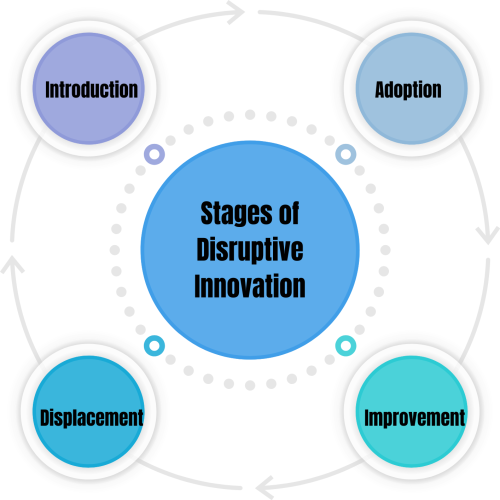
Figure 2 highlights several disruptive innovations that have reshaped industries and how people live, work, and play. Many of these innovations leverage digital opportunities, technological advancements and the sharing economy, and have resulted in significant shifts in consumer behaviour and consumption patterns. Several of these disruptive innovations are characteristically cheaper, smaller or more convenient.
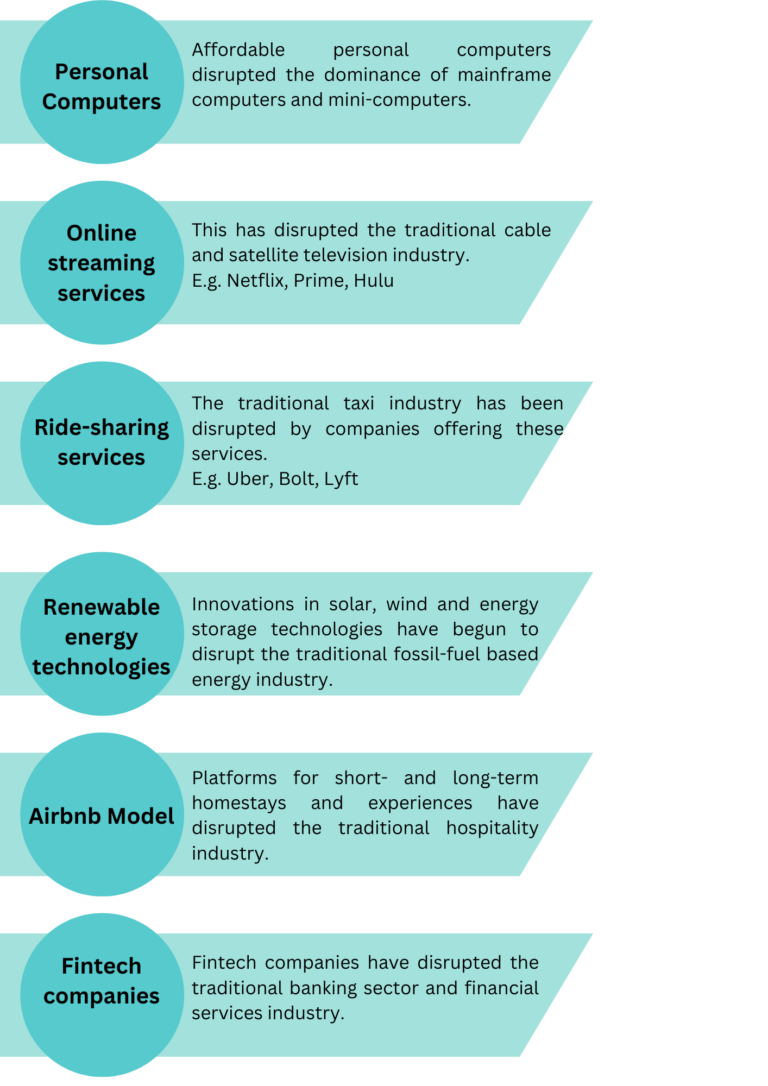
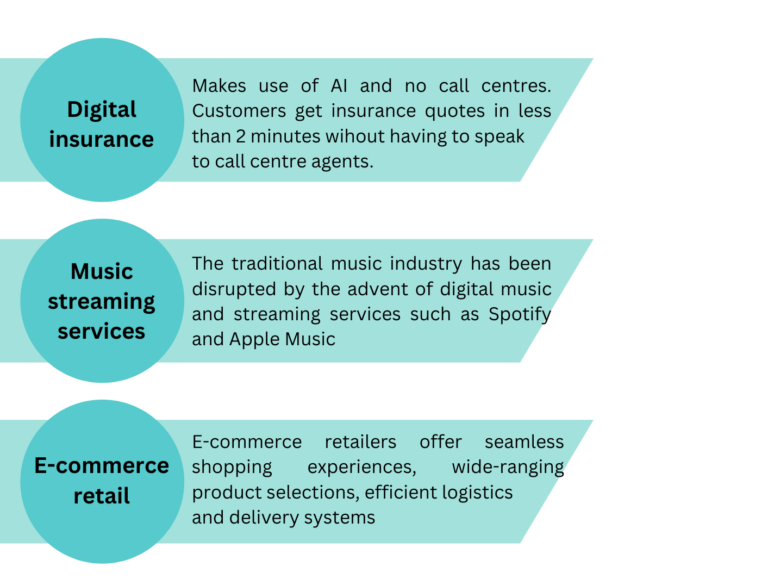
Overall, the article outlines the concept of disruptive innovation and how it can upend the status quo, ultimately transforming the market structure of an industry or many interconnected industries. In a competitive landscape, well-established companies are becoming challenged by disruptive innovations—they must adapt or risk becoming obsolete. Companies must proactively identify and respond to these disruptive threats by adapting their business models or investing in new technologies and ventures. Without embracing a mindset of disruptive innovation, they risk significant losses.
But what does this mean for innovators? From the perspective of an innovator, the possibility of creating and developing a disruptive innovation represents a significant opportunity to displace the leading players in a market, challenge the status quo, change consumer behaviour and positively influence society by addressing unmet needs or solving problems in new ways. In a world of constant technological advancement, innovators and entrepreneurs must continuously strive to maintain their competitive edge by thinking outside the box and seeking unexplored market opportunities. As new entrants, they need to inspect and explore the bottom of their respective markets and look beyond the existing customer bases of well-established firms to niche areas. In the ever-evolving landscape of disruptive innovation, the call to action for innovators is clear: embrace change, be observant, challenge the status quo, and unleash the full potential of their visionary ideas to shape the future.
References
Christensen, C. (1997). The Innovator’s Dilemma: When New Technologies Cause Great Firms to Fail. Boston, MA: Harvard Business School Press.
Christensen, C.M., McDonald, R., Altaman, E.J., and Palmer, J.E. (2018). Disruptive Innovation: An Intellectual History and Directions for Future Research, Journal of Management, 55(7), 1043-1078.

By: Tracy Khuzwayo
EMPATHY-DRIVEN INNOVATION: DESIGNING SOLUTIONS WITH AND FOR COMMUNITIES
What do birth control pills, plastic bags, and Google Glass all have in common? Despite their innovative brilliance, they all fall short of one critical element: understanding the human experience. While birth control pills revolutionised family planning, their initial development often overlooked the lived experiences of women in diverse cultural and economic contexts. Similarly, plastic bags prioritised convenience but ignored their long-term environmental impact, and Google Glass failed to consider social acceptance and practical usability of their glasses. These examples underscore a common pitfall of innovation: a lack of human-centric design. This article focuses on the importance of empathy-driven innovation in designing sustainable and meaningful solutions by engaging communities through co-creation and understanding their lived experiences.
Innovation isn’t just about technological breakthroughs, product development or creative ideas; it can be expanded to include social innovation and new ways of working with communities. Nonetheless, all types of innovation require empathy — a deep understanding of people’s needs, desires, and lived experiences (Brown, 2009). In a world teeming with social, environmental, political, and economic challenges, empathy-driven innovation offers a pathway to meaningful, well-considered, sustainable solutions (Nussbaum, 2001). Empathy-driven innovation can be incorporated across all spectrums of innovation (such as social, technological or disruptive innovation) and solutions design.
DISSECTING EMPATHY IN INNOVATION
As an African rooted in the concept of ubuntu, I believe it wonderfully captures the essence of empathy. Ubuntu transcends mere understanding. Its philosophy — “I am because you are” — emphasises interconnectedness, reminding us that our humanity is tied to one another’s well-being (Mbiti, 1991; Tutu, 1999).
Empathy in innovation embodies this interconnectedness, creating a bridge between solution creators and their intended users. Traditional innovation often adopts a top-down approach, assuming the needs of users or communities without involving them (Kolko, 2015). Empathy-driven innovation flips this narrative by co-creating solutions alongside communities, ensuring they are rooted in lived realities rather than abstract or biased assumptions (Nussbaum, 2001).
THE BENEFITS OF CO-CREATION
Having worked in under-resourced communities across South Africa for almost a decade, I have witnessed the power of empathy-driven innovation. I have also seen how its absence can undermine even the most well-intentioned initiatives. Many organisations fail because their solutions are based on assumptions rather than authentic engagement (IDEO, 2015).
When communities are meaningfully involved in co-creating solutions, some of the transformative benefits include (Design Council UK, 2015):
- Building Trust and Solidarity
Co-creation strengthens community trust in organisations and fosters solidarity. Solutions are not imposed but owned, increasing buy-in and long-term commitment.
Fostering Innovation and Inclusivity
Empathy-driven innovation promotes diverse perspectives and inclusivity, resulting in solutions that are creative, equitable, and culturally relevant.
- Reducing Risks of Failure
Iterative processes allow organisations to receive feedback, adapt quickly, and avoid missteps that often result in costly failures.
- Capacity Building
Through workshops and training, communities build new skills, further empowering them to sustain and expand on innovations.
EMPATHY IN ACTION: A STEP-BY-STEP GUIDE
I had the privilege of being part of an empathy-driven social innovation sparked by the community of Cato Manor, Durban. This historically vibrant, multicultural community — disrupted by apartheid’s Group Areas Act — now grapples with systemic challenges like unemployment, high population density, and crime. To address these issues, a group of stakeholders, mostly composed of non-profit organisations and public institutions, came together to form a Community of Practice (COP).
According to Wenger (2011), a COP consists of a group of people who come together because they share common interests, challenges or goals. He further goes on to elaborate that these groups are built on shared experiences, collaboration and a mutual commitment to learning and problem-solving. They engage in discussions, share knowledge, and participate in activities that support their shared purpose. Such communities can exist across organisations or within a single organisation and are fuelled by members’ genuine motivation to grow, innovate and strengthen their collective understanding (Wenger, 2011).
The Cato Manor COP’s mission is to foster partnerships that improve the lives of community members while ensuring initiatives are sustainable and meaningful. The key to their success? Grounding every step of the process in empathy. Instead of saying, “I think, so I will do,” we practiced, “We have spoken, we have agreed, and therefore we will do.” This empathetic shift empowered the community to feel a sense of ownership, relevance, and pride in the solutions they helped design.
The following steps (adapted from IDEO, 2015), which inspired the evolution of the Cato Manor COP, are vital for designing empathy-driven innovation:
- Understand the Community
Use ethnographic research and participatory methods to build a rich understanding of community culture, structure, and needs (Kretzmann & Knight, 1993). For example, in Cato Manor, initial research was conducted through a needs assessment survey and community interviews validated by members to ensure accuracy and inclusivity.
- Foster Collaboration
Engage the community in co-creating solutions by hosting brainstorming sessions and think tanks. Regular meetings provide opportunities for feedback and adaptation, and also assist with the building of trust amongst diverse organisations. In Cato Manor, the COP’s inclusive approach ensured ideas were reviewed and refined collaboratively. In July 2024, the COP hosted a learning lab where members analysed research findings and shared key learnings and actionable insights. The session was facilitated by Innovate Durban’s Research Team, a key member of the COP.
- Ensure Accessibility
Align solutions with the community’s cultural, social, and economic realities. In Cato Manor, communication materials were shared in accessible formats, including posters, WhatsApp messages, and visual aids, ensuring inclusivity across literacy levels.
- Test, Learn, and Adapt
Prototype solutions and test them in real-world scenarios. For example, the COP hosted a community expo in November 2024 (Day Two of Innovate Durban’s Innovation Festival) to share its work, gather feedback and network with the COP and the community at large. This event highlighted successes and revealed areas for improvement, laying the groundwork for future initiatives.
- Build Capacity and Ownership
Empower communities by providing training and leadership opportunities. The COP nominated local champions to key positions (in the form of a steering committee), fostering a sense of pride and shared responsibility. A sense of accountability was also established through the co-creation of a code of conduct, which applies to all members.
- Measure Impact and Ensure Sustainability
Evaluate both quantitative outputs and qualitative outcomes. The COP’s planned annual evaluation workshops will ensure that initiatives evolve alongside the community’s needs. The next evaluation workshop will be taking place in January 2025.
- Maintain Continuous Engagement
Transparent, ongoing communication channels — such as WhatsApp groups and community hubs — enable the COP to adapt its solutions in real time.
THE ROAD LESS TRAVELED
Empathy-driven innovation is not without its challenges. Balancing community input with scalability can be daunting, and limited resources often test the viability of grassroots efforts (Buur & Matthews, 2008). Resistance from stakeholders unfamiliar with participatory approaches is another hurdle.
Yet, the rewards far outweigh these challenges. Solutions grounded in empathy are not only more effective but also more enduring. Even with resource constraints, small steps like community focus groups can ensure innovation remains inclusive and relevant (Buur & Matthews, 2008; Prahalad & Ramaswamy, 2004).
CONCLUSION
Empathy-driven innovation represents the future of sustainable problem-solving. By designing solutions with and for communities, we can address systemic inequalities, amplify marginalised voices, and create systems that are equitable and resilient.
As the world faces pressing challenges like climate change, inequality, and public health crises, empathy must be at the heart of every solution. It ensures that innovations are not just impactful but profoundly human.
Let us commit to building a future where every solution is grounded in understanding, compassion, and collaboration. Together, we can design innovations that not only solve problems but also honour the humanity of those they serve.
REFERENCES
- Brown, T. (2009). Change by design: How design thinking creates new alternatives for business and Harper Business.
- Buur, J., & Matthews, B. (2008). Participatory innovation. International Journal of Innovation Management, 12(03), 255-273.
- Design Council UK. (2015). The value of design: How design shapes everyday life. Design Council.
- IDEO (2015). The field guide to human-centered design. Retrieved from Field+Guide+to+Human-Centered+Design_IDEOorg_English.pdf
- Kolko, J. (2015). Design thinking comes of age. Harvard Business Review. Retrieved from https://cdn.fedweb.org/fed-42/2892/design_thinking_comes_of_age.pdf
- Kretzmann, J. P., & McKnight, J. L. (1993). Building communities from the inside out: A path toward finding and mobilizing a community’s assets. ACTA Publications.
- Mbiti, J. S. (1991). African religions and philosophy.
- Nussbaum, M. C. (2001). Upheavals of thought: The intelligence of emotions. Cambridge University Press.
- Prahalad, C. K., & Ramaswamy, V. (2004). Co-creation experiences: The next practice in value creation. Journal of Interactive Marketing, 18(3), 5–14. https://doi.org/10.1002/dir.20015
- Tutu, D. (1999). No future without forgiveness.
- Wenger, E. (2011). Communities of practice: A brief introduction.
